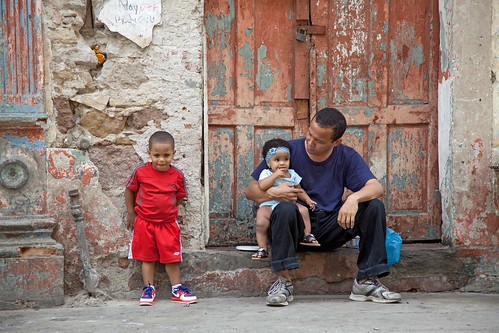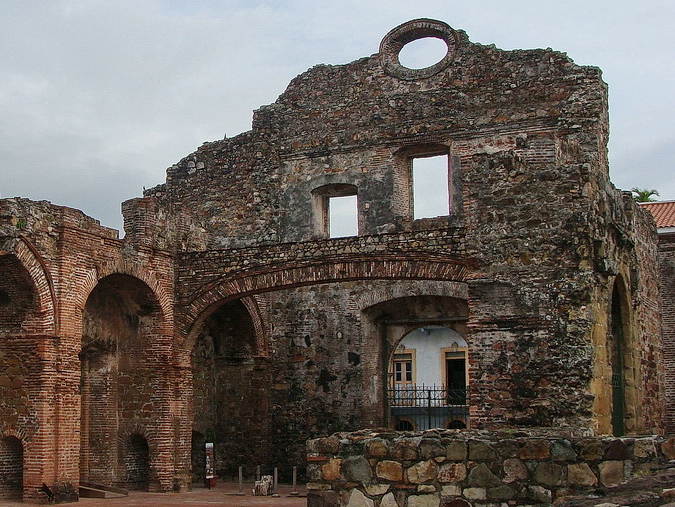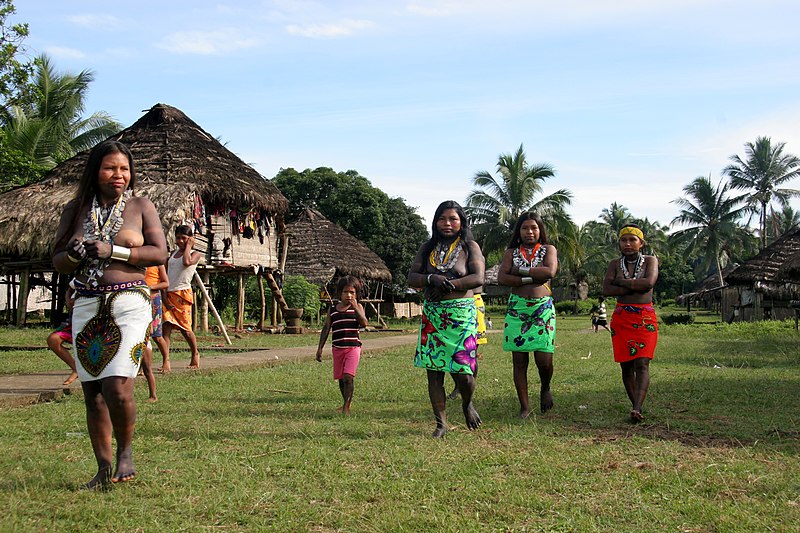Difference between revisions of "Adopting from Panama"
m (Sstubbert moved page Panama to Adopting from Panama) |
|||
| Line 1: | Line 1: | ||
| − | {{#eimage:https://www.cia.gov/library/publications/the-world-factbook/graphics/flags/large/pm-lgflag.gif|410x579px|thumb|'''The official flag | + | {{#eimage:https://www.cia.gov/library/publications/the-world-factbook/graphics/flags/large/pm-lgflag.gif|410x579px|thumb|'''The official flag.'''<BR/>Source: cia.gov.}} |
| − | {{#eimage:https://www.cia.gov/library/publications/the-world-factbook/graphics/maps/pm-map.gif|410x579px|thumb|'''Map | + | {{#eimage:https://www.cia.gov/library/publications/the-world-factbook/graphics/maps/pm-map.gif|410x579px|thumb|'''Map.'''<BR/>Source: cia.gov.}} |
| − | {{#eimage:https://www.cia.gov/library/publications/the-world-factbook/graphics/locator/cam/pm_large_locator.gif|410x579px|thumb|'''Map | + | {{#eimage:https://www.cia.gov/library/publications/the-world-factbook/graphics/locator/cam/pm_large_locator.gif|410x579px|thumb|'''Map.'''<BR/>Source: cia.gov.}} |
| − | {{#eimage:http://upload.wikimedia.org/wikipedia/commons/thumb/8/89/Coat_of_Arms_of_Panama.svg/543px-Coat_of_Arms_of_Panama.svg.png|410x579px|thumb|'''The official coat of arms | + | {{#eimage:http://upload.wikimedia.org/wikipedia/commons/thumb/8/89/Coat_of_Arms_of_Panama.svg/543px-Coat_of_Arms_of_Panama.svg.png|410x579px|thumb|'''The official coat of arms.'''<BR/>Source: Wikipedia.org.}} |
{{#eimage:https://farm9.staticflickr.com/8001/7409385142_92fb91a798.jpg|410x579px|thumb|'''Panamanian children.'''<BR/>Source: flickr.com.}} | {{#eimage:https://farm9.staticflickr.com/8001/7409385142_92fb91a798.jpg|410x579px|thumb|'''Panamanian children.'''<BR/>Source: flickr.com.}} | ||
| − | {{#eimage:http://upload.wikimedia.org/wikipedia/commons/e/ef/Arco_chato.jpg|410x579px|thumb|'''Santo Domingo Church | + | {{#eimage:http://upload.wikimedia.org/wikipedia/commons/e/ef/Arco_chato.jpg|410x579px|thumb|'''Santo Domingo Church.'''<BR/>Source: Wikipedia.org.}} |
| − | {{#eimage:http://upload.wikimedia.org/wikipedia/commons/thumb/b/b2/Architecture_in_Panama_City.jpg/600px-Architecture_in_Panama_City.jpg|410x579px|thumb|'''The Old Quarter of Panama City.'''<BR/>Source: Wikipedia.org.}} | + | {{#eimage:http://upload.wikimedia.org/wikipedia/commons/thumb/b/b2/Architecture_in_Panama_City.jpg/600px-Architecture_in_Panama_City.jpg|410x579px|thumb|'''The Old Quarter of [[Panama]] City.'''<BR/>Source: Wikipedia.org.}} |
| − | {{#eimage:http://upload.wikimedia.org/wikipedia/commons/thumb/b/b8/Gatun_lock_gate.JPG/450px-Gatun_lock_gate.JPG|410x579px|thumb|'''Mitre type lock gates at Gatun Lock, Panama Canal | + | {{#eimage:http://upload.wikimedia.org/wikipedia/commons/thumb/b/b8/Gatun_lock_gate.JPG/450px-Gatun_lock_gate.JPG|410x579px|thumb|'''Mitre type lock gates at Gatun Lock, [[Panama]] Canal.'''<BR/>Source: Wikipedia.org.}} |
| − | {{#eimage:http://upload.wikimedia.org/wikipedia/commons/thumb/b/bb/VistaBoquete.jpg/800px-VistaBoquete.jpg|410x579px|thumb|'''Chiriquí | + | {{#eimage:http://upload.wikimedia.org/wikipedia/commons/thumb/b/bb/VistaBoquete.jpg/800px-VistaBoquete.jpg|410x579px|thumb|'''Chiriquí.'''<BR/>Source: Wikipedia.org.}} |
{{#eimage:http://upload.wikimedia.org/wikipedia/commons/thumb/d/d8/Panama_Embera_0617.jpg/800px-Panama_Embera_0617.jpg|410x579px|thumb|'''Embera-Wounaan women dressed for a dance.'''<BR/>Source: Wikipedia.org.}} | {{#eimage:http://upload.wikimedia.org/wikipedia/commons/thumb/d/d8/Panama_Embera_0617.jpg/800px-Panama_Embera_0617.jpg|410x579px|thumb|'''Embera-Wounaan women dressed for a dance.'''<BR/>Source: Wikipedia.org.}} | ||
| − | |||
| − | + | '''Notice: As of July 14, 2014, all individuals and agencies facilitating [[international]] adoptions must be in compliance with the Intercountry [[Universal Accreditation Act]].''' | |
| − | |||
| + | =About Panama= | ||
| − | + | Explored and settled by the Spanish in the 16th century, [[Panama]] broke with [[Spain]] in 1821 and joined a union of [[Colombia]], [[Ecuador]], and [[Venezuela]] - named the Republic of Gran [[Colombia]]. When the latter dissolved in 1830, [[Panama]] remained part of [[Colombia]]. With US backing, [[Panama]] seceded from [[Colombia]] in 1903 and promptly signed a treaty with the US allowing for the construction of a canal and US sovereignty over a strip of land on either side of the structure (the [[Panama]] Canal Zone). To learn more please read [[About Panama]]. | |
| − | + | =Hague Convention Information= | |
| + | [[Panama]] is party to the Hague Convention on Protection of Children and Co-operation in Respect of Intercountry [[Adoption]] ([http://adoption.state.gov/hague_convention/overview.php Hague Adoption Convention]). Therefore, all intercountry adoptions between [[Panama]] and the United States must meet the requirements of the Convention and U.S. law implementing the Convention. To learn more please read about [[Panama and the Hague Convention]]. | ||
| − | |||
=Who Can Adopt= | =Who Can Adopt= | ||
| − | Adoption between the United States and Panama is governed by the Hague Adoption Convention. Therefore to [[adopt]] from Panama, you must first be found eligible to [[adopt]] by the U.S. Government. The U.S. Government agency responsible for making this determination is the Department of Homeland Security, U.S. Citizenship and Immigration Services (USCIS). [http://adoption.state.gov/adoption_process/who.php Learn more]. | + | [[Adoption]] between the United States and [[Panama]] is governed by the Hague [[Adoption]] Convention. Therefore to [[adopt]] from [[Panama]], you must first be found eligible to [[adopt]] by the U.S. Government. The U.S. Government agency responsible for making this determination is the Department of Homeland Security, U.S. Citizenship and Immigration Services (USCIS). [http://adoption.state.gov/adoption_process/who.php Learn more]. To learn more please read about [[Who Can Adopt from Panama]]. |
| − | |||
| − | |||
| − | |||
| − | |||
| − | |||
| − | |||
| − | |||
| − | |||
| − | |||
| − | |||
| − | |||
| − | |||
| − | |||
| − | |||
| − | |||
| − | |||
| − | |||
| − | |||
| − | |||
| − | |||
| − | |||
| − | |||
| − | |||
| − | |||
=Who Can Be Adopted= | =Who Can Be Adopted= | ||
| − | Because Panama is party to the Hague Adoption Convention, children from Panama must meet the requirements of the Convention in order to be eligible for adoption. In accordance with the Convention, the Central Authority of Panama determines whether possibilities for placement of the child in Panama have been given due consideration. In addition to Panama's requirements, a child must meet the definition of a Convention adoptee for you to bring him or her back to the United States. | + | Because [[Panama]] is party to the Hague [[Adoption]] Convention, children from [[Panama]] must meet the requirements of the Convention in order to be eligible for [[adoption]]. In accordance with the Convention, the Central Authority of [[Panama]] determines whether possibilities for placement of the child in [[Panama]] have been given due consideration. In addition to [[Panama]]'s requirements, a child must meet the definition of a Convention adoptee for you to bring him or her back to the United States. To learn more please read about [[Who Can Be Adopted from Panama]]. |
| − | |||
| − | |||
| − | |||
| − | |||
| − | |||
| − | |||
| − | |||
| − | |||
| − | |||
| − | |||
=How to Adopt= | =How to Adopt= | ||
| Line 82: | Line 47: | ||
==Adoption Authority== | ==Adoption Authority== | ||
| − | '''Panama's Adoption Authority''' | + | '''[[Panama]]'s [[Adoption]] Authority''' |
| − | Panama's central adoption authority under the Hague Adoption Convention is the Secretaría Nacional de Niñez, Adolescencia y Familia (SENNIAF). | + | [[Panama]]'s central [[adoption]] authority under the Hague [[Adoption]] Convention is the Secretaría Nacional de Niñez, Adolescencia y Familia (SENNIAF). |
===The Process=== | ===The Process=== | ||
| − | Because Panama is party to the Hague Adoption Convention, adopting from Panama must follow a specific process designed to meet the Convention's requirements. A brief summary of the Convention adoption process is given below. You must complete these steps in the following order so that your adoption meets all necessary legal requirements. | + | Because [[Panama]] is party to the Hague [[Adoption]] Convention, adopting from [[Panama]] must follow a specific process designed to meet the Convention's requirements. A brief summary of the Convention [[adoption]] process is given below. You must complete these steps in the following order so that your [[adoption]] meets all necessary legal requirements. |
| − | '''NOTE:''' If you filed your [[I-600A]] with Panama before April 1, 2008, the Hague Adoption Convention may not apply to your adoption. Your adoption could continue to be processed in accordance with the immigration regulations for non-Convention adoptions. [http://adoption.state.gov/hague_convention/transition.php Learn more]. | + | '''NOTE:''' If you filed your [[I-600A]] with [[Panama]] before April 1, 2008, the Hague [[Adoption]] Convention may not apply to your [[adoption]]. Your [[adoption]] could continue to be processed in accordance with the immigration regulations for non-Convention adoptions. [http://adoption.state.gov/hague_convention/transition.php Learn more]. |
| Line 99: | Line 64: | ||
# Be Matched with a Child | # Be Matched with a Child | ||
# Apply for the Child to be Found Eligible for Immigration to the United States | # Apply for the Child to be Found Eligible for Immigration to the United States | ||
| − | # [[Adopt]] the Child in Panama | + | # [[Adopt]] the Child in [[Panama]] |
# Bring your Child Home | # Bring your Child Home | ||
| + | To learn more about this process please read [[How to Adopt from Panama]]. | ||
| − | |||
| − | |||
| − | |||
| − | |||
| − | |||
| − | |||
| − | |||
| − | |||
| − | |||
| − | |||
| − | |||
| − | |||
| − | |||
| − | |||
| − | |||
| − | |||
| − | |||
| − | |||
| − | |||
| − | |||
| − | |||
| − | |||
| − | |||
| − | |||
| − | |||
| − | |||
| − | |||
| − | |||
| − | |||
| − | |||
| − | |||
| − | |||
| − | |||
| − | |||
| − | |||
| − | |||
| − | |||
| − | |||
| − | |||
| − | |||
| − | |||
| − | |||
| − | |||
| − | |||
| − | |||
| − | |||
| − | |||
| − | |||
| − | |||
| − | |||
| − | |||
| − | |||
| − | |||
| − | |||
| − | |||
| − | |||
| − | |||
| − | |||
| − | |||
| − | |||
| − | |||
| − | |||
| − | |||
| − | |||
| − | |||
| − | |||
| − | |||
| − | |||
| − | |||
| − | |||
| − | |||
| − | |||
| − | |||
| − | |||
| − | |||
| − | |||
| − | |||
| − | |||
| − | |||
| − | |||
| − | |||
| − | |||
| − | |||
| − | |||
| − | |||
| − | |||
| − | |||
| − | |||
| − | |||
| − | |||
| − | |||
| − | |||
| − | |||
| − | |||
| − | |||
| − | |||
=Traveling Abroad= | =Traveling Abroad= | ||
| Line 204: | Line 74: | ||
'''Applying for Your U.S. Passport''' | '''Applying for Your U.S. Passport''' | ||
| − | A valid U.S. passport is required to enter and leave Panama. Only the U.S. Department of State has the authority to grant, issue, or verify U.S. passports. Getting or renewing a passport is easy. | + | A valid U.S. passport is required to enter and leave [[Panama]]. Only the U.S. Department of State has the authority to grant, issue, or verify U.S. passports. Getting or renewing a passport is easy. To learn more please read about [[Traveling Abroad in Panama]]. |
| − | + | ||
| − | + | ||
| − | + | ||
| − | + | ||
| − | + | ||
| − | + | ||
| − | + | ||
| − | + | ||
| − | + | ||
| − | + | ||
| − | + | ||
| − | + | ||
| − | + | ||
| − | |||
=After Adoption= | =After Adoption= | ||
| Line 238: | Line 94: | ||
| − | + | =Contact Information= | |
| − | '''U.S. Embassy in Panama''' | + | '''U.S. Embassy in [[Panama]]''' |
Clayton Building #783 | Clayton Building #783 | ||
Ave. Demetrio B. Lakas | Ave. Demetrio B. Lakas | ||
| − | Panama City, Republic of Panama | + | [[Panama]] City, Republic of [[Panama]] |
Panama-Visas@state.gov | Panama-Visas@state.gov | ||
| − | '''Panama's Adoption Authority''' | + | '''[[Panama]]'s [[Adoption]] Authority''' |
Secretaria Nacional de la Niñez, Adolescencia y Familia (SENNIAF) | Secretaria Nacional de la Niñez, Adolescencia y Familia (SENNIAF) | ||
| Line 254: | Line 110: | ||
Avenida Ricardo J. Alfaro | Avenida Ricardo J. Alfaro | ||
Segundo Piso | Segundo Piso | ||
| − | Panama City, Panama | + | [[Panama]] City, [[Panama]] |
Tel: 500-6079 | Tel: 500-6079 | ||
Fax: 500-6075 | Fax: 500-6075 | ||
| Line 260: | Line 116: | ||
| − | '''Embassy of Panama''' | + | '''Embassy of [[Panama]]''' |
| − | Embassy of the Republic of Panama | + | Embassy of the Republic of [[Panama]] |
2862 McGill Terr., NW | 2862 McGill Terr., NW | ||
[[Washington]] , DC 20008 | [[Washington]] , DC 20008 | ||
| Line 269: | Line 125: | ||
| − | Panama also has consulates in: Mobile, Los Angeles, San Francisco, Miami, Atlanta, Honolulu, Chicago, New Orleans, [[New York]], Cleveland, Philadelphia, Houston, and San Juan. | + | [[Panama]] also has consulates in: Mobile, Los Angeles, San Francisco, Miami, Atlanta, Honolulu, Chicago, New Orleans, [[New York]], Cleveland, Philadelphia, Houston, and San Juan. |
Revision as of 06:10, 10 March 2015
Notice: As of July 14, 2014, all individuals and agencies facilitating international adoptions must be in compliance with the Intercountry Universal Accreditation Act.
Contents
About Panama
Explored and settled by the Spanish in the 16th century, Panama broke with Spain in 1821 and joined a union of Colombia, Ecuador, and Venezuela - named the Republic of Gran Colombia. When the latter dissolved in 1830, Panama remained part of Colombia. With US backing, Panama seceded from Colombia in 1903 and promptly signed a treaty with the US allowing for the construction of a canal and US sovereignty over a strip of land on either side of the structure (the Panama Canal Zone). To learn more please read About Panama.
Hague Convention Information
Panama is party to the Hague Convention on Protection of Children and Co-operation in Respect of Intercountry Adoption (Hague Adoption Convention). Therefore, all intercountry adoptions between Panama and the United States must meet the requirements of the Convention and U.S. law implementing the Convention. To learn more please read about Panama and the Hague Convention.
Who Can Adopt
Adoption between the United States and Panama is governed by the Hague Adoption Convention. Therefore to adopt from Panama, you must first be found eligible to adopt by the U.S. Government. The U.S. Government agency responsible for making this determination is the Department of Homeland Security, U.S. Citizenship and Immigration Services (USCIS). Learn more. To learn more please read about Who Can Adopt from Panama.
Who Can Be Adopted
Because Panama is party to the Hague Adoption Convention, children from Panama must meet the requirements of the Convention in order to be eligible for adoption. In accordance with the Convention, the Central Authority of Panama determines whether possibilities for placement of the child in Panama have been given due consideration. In addition to Panama's requirements, a child must meet the definition of a Convention adoptee for you to bring him or her back to the United States. To learn more please read about Who Can Be Adopted from Panama.
How to Adopt
Adoption Authority
Panama's central adoption authority under the Hague Adoption Convention is the Secretaría Nacional de Niñez, Adolescencia y Familia (SENNIAF).
The Process
Because Panama is party to the Hague Adoption Convention, adopting from Panama must follow a specific process designed to meet the Convention's requirements. A brief summary of the Convention adoption process is given below. You must complete these steps in the following order so that your adoption meets all necessary legal requirements.
NOTE: If you filed your I-600A with Panama before April 1, 2008, the Hague Adoption Convention may not apply to your adoption. Your adoption could continue to be processed in accordance with the immigration regulations for non-Convention adoptions. Learn more.
- Choose an Accredited Adoption Service Provider
- Apply to be Found Eligible to Adopt
- Be Matched with a Child
- Apply for the Child to be Found Eligible for Immigration to the United States
- Adopt the Child in Panama
- Bring your Child Home
To learn more about this process please read How to Adopt from Panama.
Traveling Abroad
Applying for Your U.S. Passport
A valid U.S. passport is required to enter and leave Panama. Only the U.S. Department of State has the authority to grant, issue, or verify U.S. passports. Getting or renewing a passport is easy. To learn more please read about Traveling Abroad in Panama.
After Adoption
What resources are available to assist families after the adoption?
Many adoptive parents find it important to find support after the adoption. Take advantage of all the resources available to your family -- whether it's another adoptive family, a support group, an advocacy organization, or your religious or community services.
Here are some good places to start your support group search:
Child Welfare Information Gateway
North American Council on Adoptable Children
Adoption Services Support Group for Adopting Persons
Contact Information
U.S. Embassy in Panama
Clayton Building #783 Ave. Demetrio B. Lakas Panama City, Republic of Panama Panama-Visas@state.gov
Secretaria Nacional de la Niñez, Adolescencia y Familia (SENNIAF) Plaza Edison Avenida Ricardo J. Alfaro Segundo Piso Panama City, Panama Tel: 500-6079 Fax: 500-6075 Internet: Panama's Adoption Authority
Embassy of Panama
Embassy of the Republic of Panama 2862 McGill Terr., NW Washington , DC 20008 Tel: 202-511-3800 Fax: 202-483-8413
Panama also has consulates in: Mobile, Los Angeles, San Francisco, Miami, Atlanta, Honolulu, Chicago, New Orleans, New York, Cleveland, Philadelphia, Houston, and San Juan.
Office of Children's Issues
U.S. Department of State CA/OCS/CI SA-17, 9th Floor Washington, DC 20522-1709 Tel: 1-888-407-4747 E-mail: AskCI@state.gov Internet: U.S. Department of State
U.S. Citizenship and Immigration Services (USCIS)
For questions about immigration procedures, call the National Customer Service Center (NCSC)
1-800-375-5283 (TTY 1-800-767-1833)
SOURCE
Intercountry Adoption, Bureau of Consular Affairs. U.S. Department of State Country Information[1]









